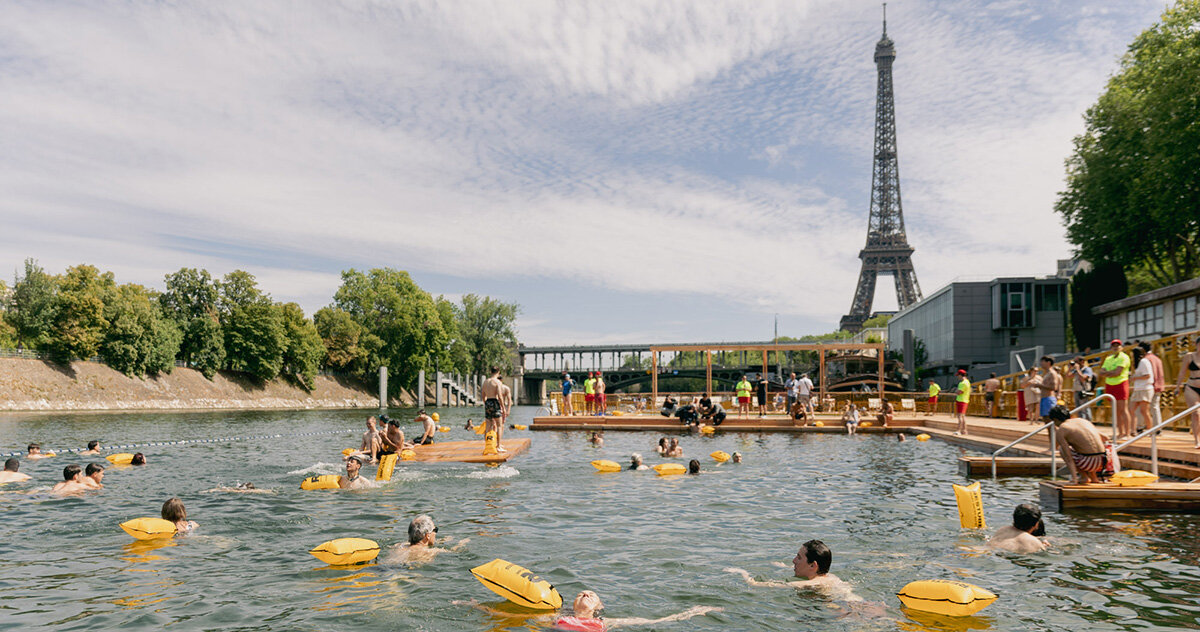swimming opens in paris after landmark river restoration
Paris has opened three designated stretches of the Seine River for public swimming, marking a significant shift in the relationship between the French city and its central waterway. The move follows a €1.4 billion ($1.64 billion) program that combined infrastructural upgrades with environmental objectives to reestablish the river as a shared civic space.
This transformation builds on years of advocacy from local swimmers and civic groups who pressed for legal access to the river. For the first time since 1923, Parisians and visitors can enter the water under the watch of lifeguards and alongside daily water-quality monitoring.
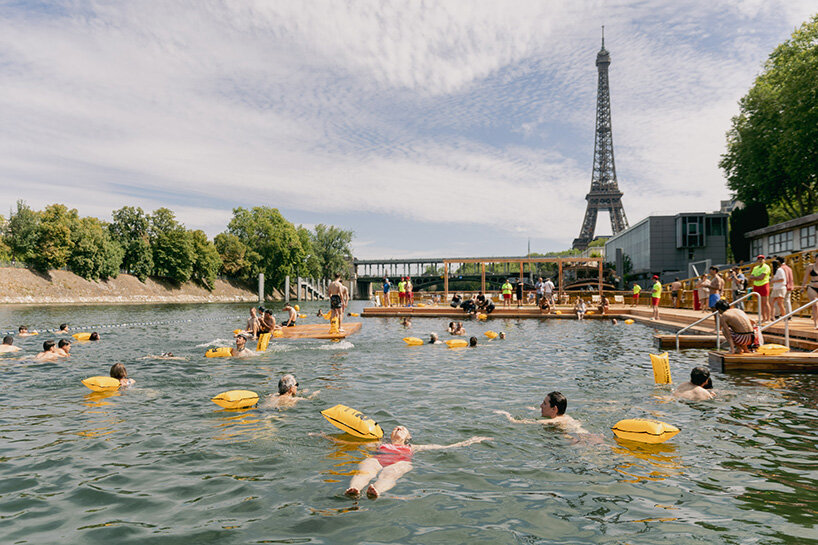
swimming at the bras de Grenelle | image © Joséphine Breuder / Ville de Paris
infrastructure and design for a cleaner seine
The reopening of the Seine for public swimming reflects a complex design effort in Paris, extending beyond cosmetic improvements. More than 20,000 homes were connected to upgraded sewer systems to prevent untreated waste from flowing into the river. Engineers constructed large rainwater storage reservoirs able to capture storm runoff equivalent to twenty Olympic swimming pools. These systems help maintain safe conditions for public swimming during heavy rain.
Additional measures include improvements to water treatment facilities and daily testing of water quality, with results communicated to swimmers using a colored flag system. Together, these interventions have created an environment where swimming is managed as an organized public amenity.
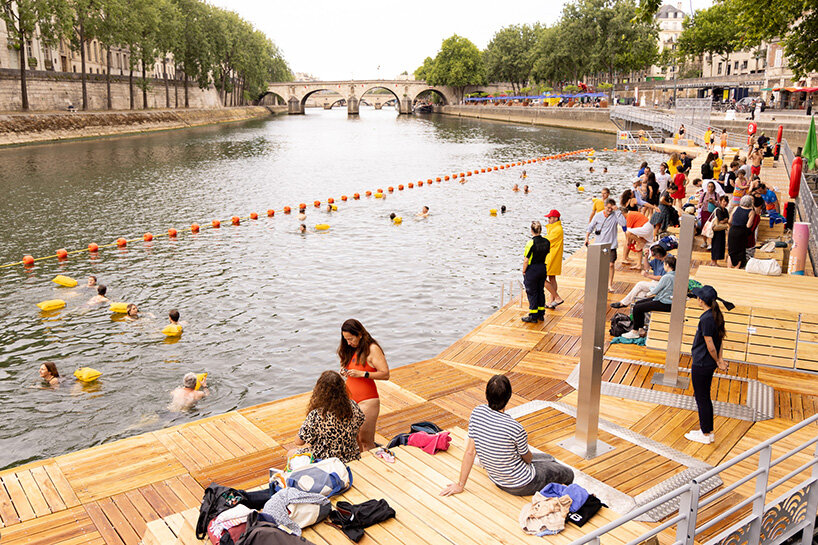
a wooden terrace allows bathers to lounge in the sun | image © Joséphine Breuder / Ville de Paris
a new way to experience the river
Each of the three bathing areas — bras de Grenelle, Baignade Bras-Marie, and Baignade Bercy — offers a different view of the city’s landmarks. Near the Eiffel Tower, the bras de Grenelle bathing area site is designed for families with small children, while the Bras-Marie stretch by Notre Dame Cathedral attracts swimmers interested in the historic riverfront. A third location at quai de Bercy, close to the National Library, is part of broader plans to enhance cultural access along the Left Bank.
Showers and changing facilities are available to visitors, supporting the experience of moving between the city and the river. Diving is prohibited due to shallow water, and lifeguards are present throughout swimming hours.

swimmers attended the historic public opening on July 5th, 2025 | image © Joséphine Breuder / Ville de Paris
Paris’s efforts have contributed to similar initiatives across Europe, where cities have worked to reclaim rivers and canals for swimming. The project has also been shaped by concerns about providing spaces for cooling off during increasingly hot summers.
Authorities expect daily usage to reach up to 1,000 swimmers through the end of August. Additional sites along the Seine and Marne rivers are planned, with two locations on the Marne already open.
While health concerns affected some training sessions and events during the Olympic Games preparations last summer, competitions proceeded as scheduled, helping to build public confidence. Tourist authorities predict that swimming in the Seine will become a popular seasonal pastime, likening the city to Copenhagen with its harbor baths.
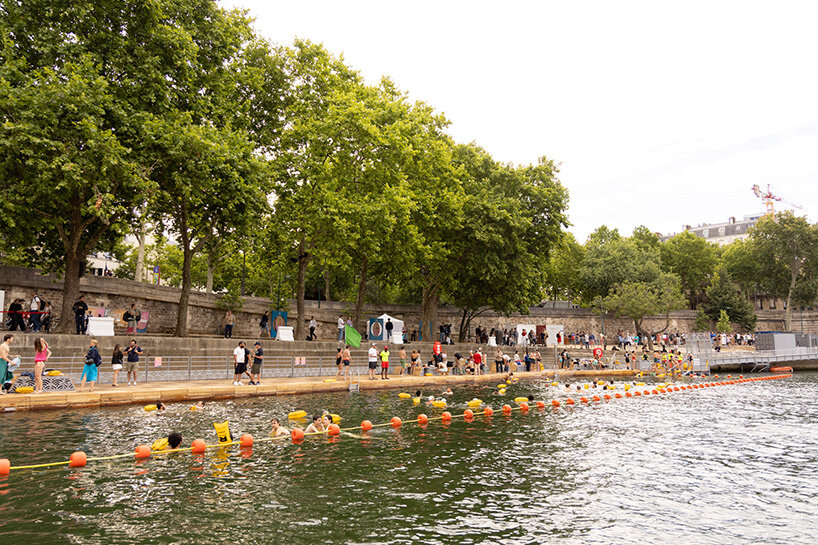
swimmers at the bras-Marie, facing the Saint-Louis island | image © Jean-Baptiste Gurliat / Ville de Paris
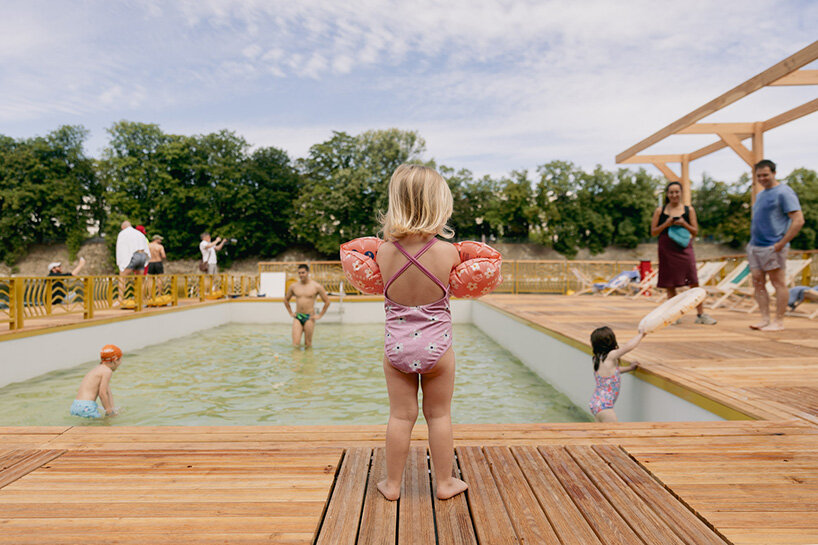
the bras de Grenelle location includes a small pool for children | image © Joséphine Breuder / Ville de Paris
